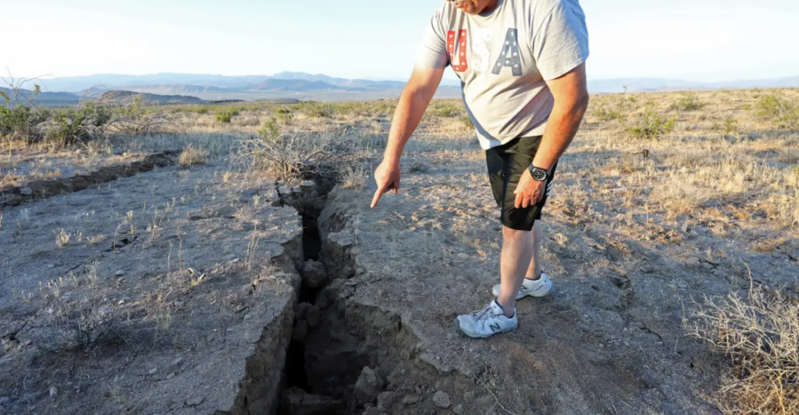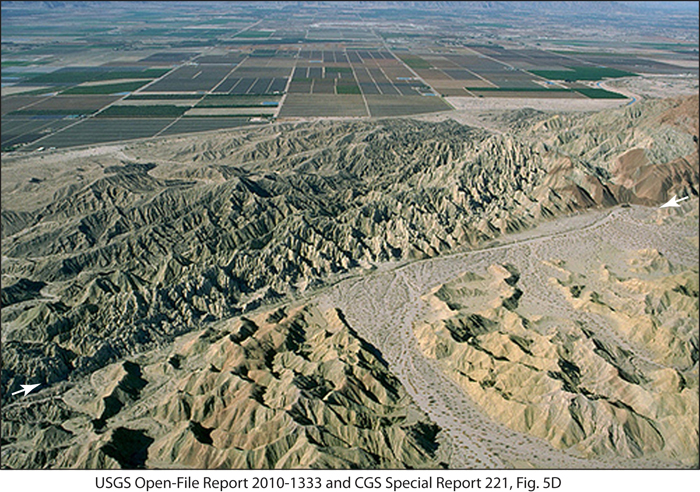California, a land of breathtaking coastlines, towering redwoods, and sprawling metropolises, is facing an unsettling reality that could redefine the way we understand seismic activity. Deep beneath its vibrant cities and picturesque landscapes, the ground is shifting—faster than anyone had anticipated. Scientists, residents, and policymakers are sounding alarms as recent studies reveal that some of California’s fault lines are moving at an accelerated pace, potentially setting the stage for devastating earthquakes far sooner than previously expected. This revelation is sending shockwaves through the scientific community, prompting urgent discussions about earthquake preparedness and the future stability of the state.
At the heart of this discovery is the intricate network of fault lines crisscrossing California, with the infamous San Andreas Fault being the most well-known. However, new data suggests that lesser-known faults, particularly within the San Andreas Fault Zone, are becoming more active, revealing a far more complex and unpredictable seismic landscape than earlier models suggested. The implications are immense: densely populated regions such as Los Angeles, San Francisco, and San Diego could face severe consequences if a major earthquake were to strike sooner than expected. This new data is forcing seismologists to re-evaluate their models and pushing state officials to expedite seismic safety measures before it’s too late.
The Growing Threat: What Scientists Have Discovered.
For decades, researchers have monitored California’s seismic activity, but recent advancements in seismic imaging and GPS technology have allowed for more precise measurements of ground movement. What they have found is alarming—certain fault segments are slipping at faster rates than previously estimated, suggesting increased stress accumulation that could trigger powerful earthquakes. One of the most concerning findings comes from the Uniform California Earthquake Rupture Forecast (UCERF3), which estimates a greater than 99% chance of a magnitude 6.7 or larger earthquake occurring in California within the next 30 years.
While the San Andreas Fault has long been considered the primary threat, researchers now recognize that other faults, such as the Hayward Fault, the Garlock Fault, and the Newport-Inglewood Fault, could be just as hazardous. In particular, the Hayward Fault, which runs through the densely populated San Francisco Bay Area, has been identified as one of the most dangerous seismic zones in the country. Scientists believe it is capable of producing a magnitude 7.0 or greater earthquake, which would have catastrophic consequences for the millions of residents living nearby.
Recent Earthquakes: A Warning Sign?
The past few years have seen an uptick in moderate seismic activity, a phenomenon that some scientists believe could be a precursor to a much larger event. In September 2023, a magnitude 3.7 earthquake near San Francisco served as a stark reminder of the ever-present seismic threats in the region. While relatively minor, these smaller quakes indicate ongoing stress within the Earth's crust, which could lead to a larger rupture.
History provides a sobering lesson—California has been struck by devastating earthquakes in the past. The 1906 San Francisco earthquake, estimated at magnitude 7.9, resulted in thousands of deaths and widespread destruction. More recently, the 1994 Northridge earthquake in Los Angeles, at magnitude 6.7, caused billions of dollars in damages and killed dozens of people. If the accelerated fault movement continues, experts fear that another major quake could strike sooner than previously projected.
How California is Responding?
With the rising urgency of these findings, scientists, engineers, and policymakers are working on multiple fronts to bolster California’s earthquake preparedness. One of the most promising advancements is the development of early warning systems that can provide critical seconds of advance notice before shaking begins. The ShakeAlert system, developed by the U.S. Geological Survey, is now operational and sends alerts to residents’ phones, allowing them to take immediate protective actions.
Additionally, urban planners and engineers are prioritizing seismic retrofitting for aging infrastructure. Many of California’s buildings, highways, and bridges were constructed before modern earthquake-resistant standards were implemented. Efforts are underway to reinforce structures to withstand seismic forces, but progress remains slow due to the high costs associated with retrofitting.
The Role of Advanced Technology in Earthquake Prediction?
Despite tremendous advancements in seismology and geophysics, the ability to precisely predict when and where an earthquake will strike remains one of the greatest challenges in earth sciences. However, new breakthroughs in artificial intelligence and deep learning algorithms are improving our ability to analyze vast amounts of seismic data. By detecting patterns in fault slip rates, ground deformation, and historical earthquake activity, scientists hope to refine their forecasting models and provide better risk assessments for vulnerable regions.
One promising area of research involves satellite-based remote sensing, which enables scientists to monitor minute changes in the Earth’s surface that may indicate stress buildup along fault lines. Interferometric Synthetic Aperture Radar (InSAR) technology has already proven useful in tracking land deformation, and its applications in earthquake forecasting are expanding rapidly.
What Residents Can Do to Prepare?
While scientific advancements and infrastructure improvements are crucial, individual preparedness remains one of the most effective ways to mitigate the risks associated with earthquakes. Experts urge residents in earthquake-prone areas to take proactive measures, including:
Creating an emergency supply kit with food, water, flashlights, and medical supplies.
Securing heavy furniture and appliances to prevent them from toppling during a quake.
Developing an emergency plan with family members to establish a safe meeting place.
Participating in earthquake drills, such as the annual Great California ShakeOut.
Learning how to turn off gas, water, and electricity in case of damage to utility lines.
The Future of Seismic Preparedness.
As California grapples with the reality of accelerating fault activity, the need for a multifaceted approach to earthquake preparedness has never been more urgent. While technological advancements are enhancing our ability to detect and analyze fault movements, there is no substitute for robust infrastructure, stringent building codes, and a well-informed public. Cities must continue investing in seismic-resistant buildings, while scientists push the boundaries of earthquake prediction research.
Moreover, state and local governments must prioritize earthquake education and funding for early warning systems, retrofitting programs, and emergency response initiatives. Collaboration between scientists, policymakers, and communities will be essential in ensuring that California remains resilient in the face of its ever-changing geological landscape.
Although earthquakes are an unavoidable part of life in California, proactive planning and scientific innovation can help minimize their devastating impact. By embracing a future-focused approach and staying vigilant, California can continue to thrive—even as the ground beneath it shifts faster than ever before.














0 commentaires: